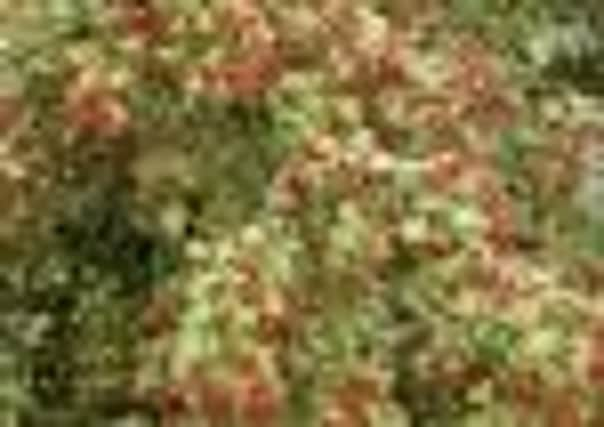Hail to the hawthorn


It sound too good to be true, but it’s not – this plant actually exists and was once one of the most commonly grown in the whole of England.
Take a bow the hawthorn, crataegus, long ago grown in huge numbers by farmers marking their boundaries and wanting to keep their stock from wandering. Fences and wire, then the greed for greater field sizes, finally put an end to the hawthorn’s domination of our countryside, but that hasn’t stopped it making a comeback in the garden.
Advertisement
Hide AdAdvertisement
Hide AdThis is a small tree with big ideas – it produces masses of spring foliage, bumper crops of berries, stems to deter even the most resolute of invader, and some even end the year in a flourish of autumnal reds and golds. It can even grow happily in the salt-laden air of the seaside.
The English hawthorn is C monogyna, used for centuries for hedges but now also considered important enough to be a specimen tree. Its deep green leaves are the ideal background for the masses of frothy, white and fragrant spring flowers.
And for those who aren’t into white, there are varieties which produce pink and even deep red blooms.
If left to its own devices, such a specimen tree could eventually reach a height of 30ft and a width of nearly half that, so it’s more for the larger garden than your average semi-detached suburban plot.
Advertisement
Hide AdAdvertisement
Hide AdEven so, there is usually a variety for every garden, and the less-spiny types like C oxyacantha ‘Paul’s Scarlet’, which produces double red flowers and is less vigorous than its English cousin, perhaps attaining a height of 20ft.
C orientalis produces some of the best berries, while C crusgalli is a joy to behold in autumn despite its evil thorns. And the hardy native C prunifloria also makes a lovely specimen. It’s a spiky specimen which produces masses of white spring blossom, followed by red berries.
So there’s no shortage of hawthorns available for an eye-catching garden tree – and if you want a reliable and interesting hedge, it’s worth considering. Prune it to shape in summer or, if you have the room, let it spread a bit more.
Just remember that all those spines can make it a bit child-unfriendly.